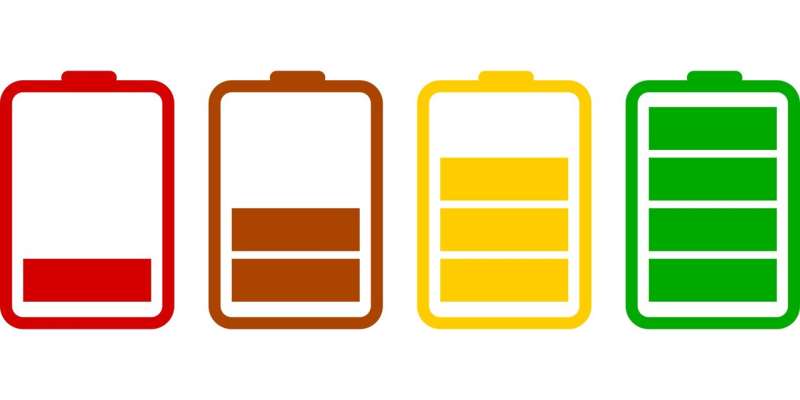Researchers create a roadmap to better multivalent batteries

Lithium-ion batteries are recognized for their high energy density in everything from mobile phones to laptop computers and electric vehicles, but as the need for grid-scale energy storage and other applications becomes more pressing, researchers have sought less expensive and more readily available alternatives to lithium.
Batteries using more abundant multivalent metals could revolutionize energy storage. Researchers review the current state of multivalent metal-ion battery research and provide a roadmap for future work in Nature Energy, reporting that the top candidates—using magnesium, calcium, zinc and aluminum—all have great promise, but also steep challenges to meet practical demands.
"In this review, we clarify the key strengths as well as common misconceptions of multivalent metal-based batteries," said Yan Yao, Cullen College of Engineering associate professor of electrical and computer engineering at the University of Houston and co-corresponding author of the paper. "Multivalent metal-ion batteries are better viewed as alternative solutions for large-scale energy storage than as a direct competitor to lithium-based batteries in the race toward ever-rising energy density targets."
Researchers also examined the growth behavior of metal anodes. While magnesium is a promising material, Yao said it is important to note that it is not guaranteed to plate universally in dendrite-free morphology. "It only does so in selected electrolyte solutions where there are no side reactions, the active metal surface is free of passivation, and the coulombic efficiency of magnesium plating stripping is close to unity," he said.
Yao is also a principal investigator with the Texas Center for Superconductivity at UH (TcSUH).
Yanliang "Leonard" Liang, a research assistant professor in the Department of Electrical and Computer Engineering at UH and co-first author, said the paper's review of existing cathode materials also offers new insights. "We also discuss design strategies to enable genuine multivalent metal-ion-based energy storage materials with competitive performance," he said.
Researchers' key points include:
- Concerns about the availability and cost of lithium have prompted interest in alternative battery technologies that use more abundant elements with the potential for higher energy density and enhanced safety. Prime candidates include magnesium, calcium, zinc and aluminum, all of which are known as multivalent metals, or metals with multiple valence electrons to give
- These multivalent metal-ion batteries share many similarities in working principles with lithium-ion batteries, suggesting they could be swiftly adopted by industry
- Previous assessments of the anticipated energy density of these batteries often considered only the multivalent metal anode—merely one of the two electrodes in a battery—which tends to reach misleading conclusions. The researchers have provided a reassessment of the energy density based on both anode and cathode, aiming to better position these batteries in the energy storage landscape
- Direct use of metals as anodes is an important aspect for the safety and energy density promises of these batteries, but there are uncertainties surrounding the viability of these anodes
- Electrolyte solutions and understanding of the associated interfacial phenomena are improving but still far from established
- And finding good cathode materials requires considerations that are uncommon in traditional battery studies. The ion storage mechanism of multivalent battery cathodes is much more complicated than its lithium-ion counterpart.
- Misinterpretation of the cathode chemistry is surprisingly widespread in the literature as a result
The researchers also issued a list of recommendations to ensure future research is squarely directed at improving the batteries, including:
- Gaining a better understanding of the growth behavior of the metal anodes, a critical step in realizing the purported safety promises over lithium-ion batteries
- Practices to properly assess the compatibility of metal anodes with electrolyte solutions and the effectiveness of protection coatings
- Procedures and techniques to correctly interpret the ion storage mechanism at the cathode
- Approaches to design better cathode materials
A table comparing the state-of-the-art components—metal anode, electrolyte and cathode materials—for batteries based on each of the multivalent metal elements that could potentially replace lithium found that although some are further along than others, none of the options are ready for commercialization.
Yao's research group has focused on materials chemistry and design of magnesium and other multivalent metal batteries; he has published widely in top journals.
More information: Yanliang Liang et al. Current status and future directions of multivalent metal-ion batteries, Nature Energy (2020). DOI: 10.1038/s41560-020-0655-0



















